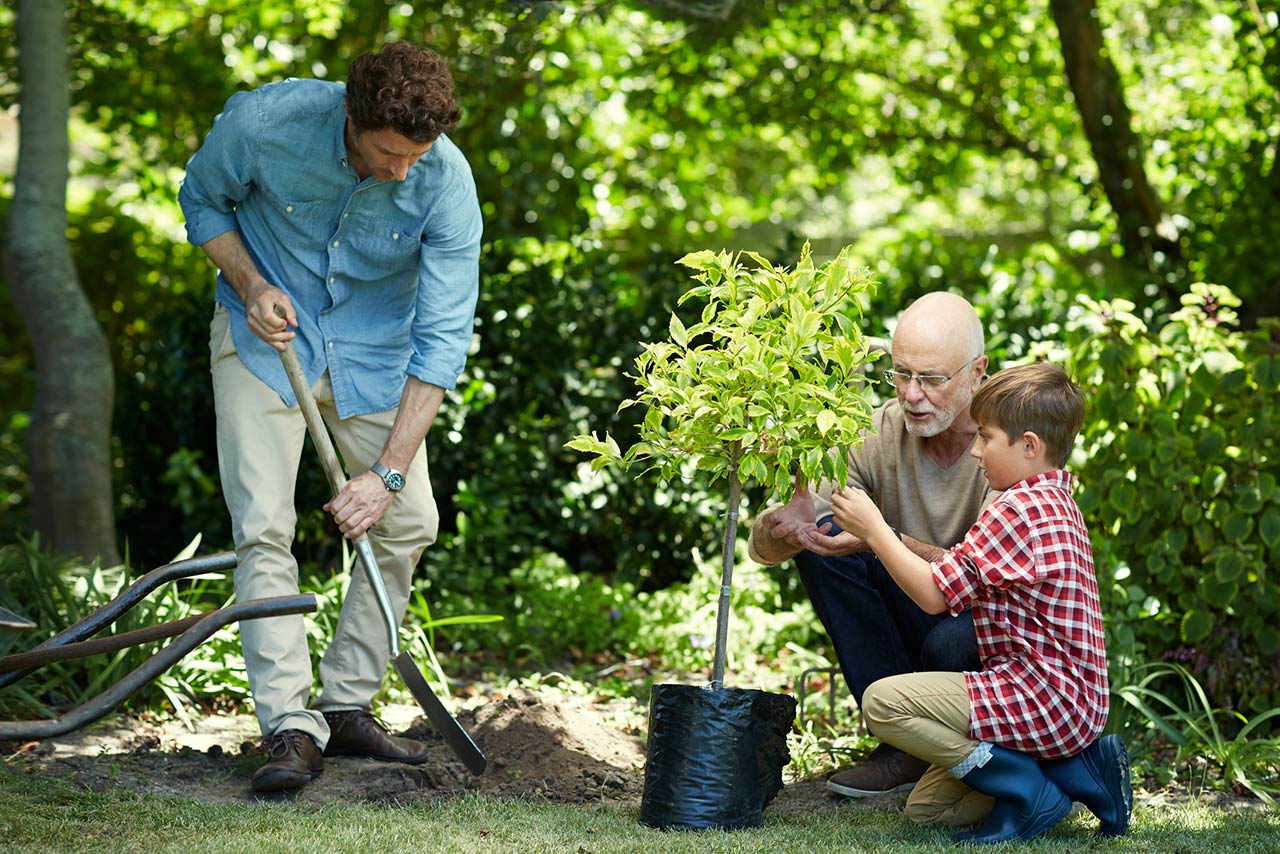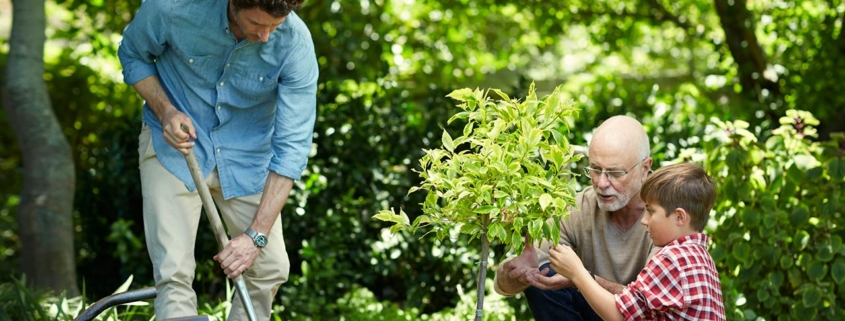Kathy’s Home & Garden Tips – Best Time To Tree Plant

I arrived home yesterday to find a wonderful surprise. A new tree on the parkway in front of my house! Here in Chicago, where I live, the city plants trees for homeowners who have lost trees due to illness, disease, or been cut down to facilitate utility work. It makes me think this is a great time to talk about planting and caring for new trees.
Fall is the best time to plant trees. The hot weather has passed, and the tree will have time to establish before the ground freezes. Trees now can be purchased at a good discount from nurseries and home centers as they wish to clear out inventory before winter. Trees come in three root forms. Here is how to plant them.
Bare root trees are seldom seen, but you may run across some. Do not let the roots dry out! Soak them three to six hours before planting. Dig the hole wider than you think necessary but not too deep, till the soil around the hole for good root growth. You want the very top of the root flare exposed. Fill ½ way with original soil and pack well. Fill the hole to the top of the flare and firm again. Make a basin shape at the top with the soil to direct water towards the tree—water well. Place a three-foot diameter ring of mulch two-four inches deep, not touching the trunk.
Smaller trees and shrubs will often come in containers. When you carry these, always pick up by the container, not the trunk! Dig the hole three to four times wider than the container, sloping the sides toward the tree. Lay the container on its side and tap to tease the tree out. Do not yank it out; you could rip the tree off the roots! If the tree seems root-bound, cut an X in the bottom of the ball and four vertical slices on the sides. Use a sharp knife and cut in an inch or so. Follow as with bare root tree. Fill with the original soil, packing firmly with no air pockets and making a basin for watering. Continue with mulch.
Larger trees will usually come with the root ball encased in burlap and surrounded with a wire cage. Dig the hole two to three times the ball’s width and till the soil further than before, approximately five times the root ball width. Do not disturb the soil at the bottom of the hole. Handle the tree the same as the container type – only by the ball, not the trunk. Place in the hole and remove the basket with wire cutters along with any nails holding the burlap. Cut off the burlap. The small piece under the ball can remain if it is not treated or vinyl encased. Fill as before, packing soil firmly and leavening root flare exposed, creating a water basin and mulching.
New trees need to be watered weekly until the ground freezes. Then continue in the spring for the first year, especially in dry weather. Lay a slow running open hose at the dripline. Slow trickle, so it is not flooded. Do not fertilize, apply chemicals, or use soil containing such. These products will kill young trees.
Let’s plant some trees this fall. Take care of the ones we have now, even the established trees, by giving them water several times before the ground freezes in our dry spell in Chicagoland.
KATHLEEN WEAVER-ZECH AND DEAN’S TEAM CHICAGO

